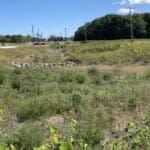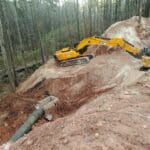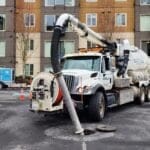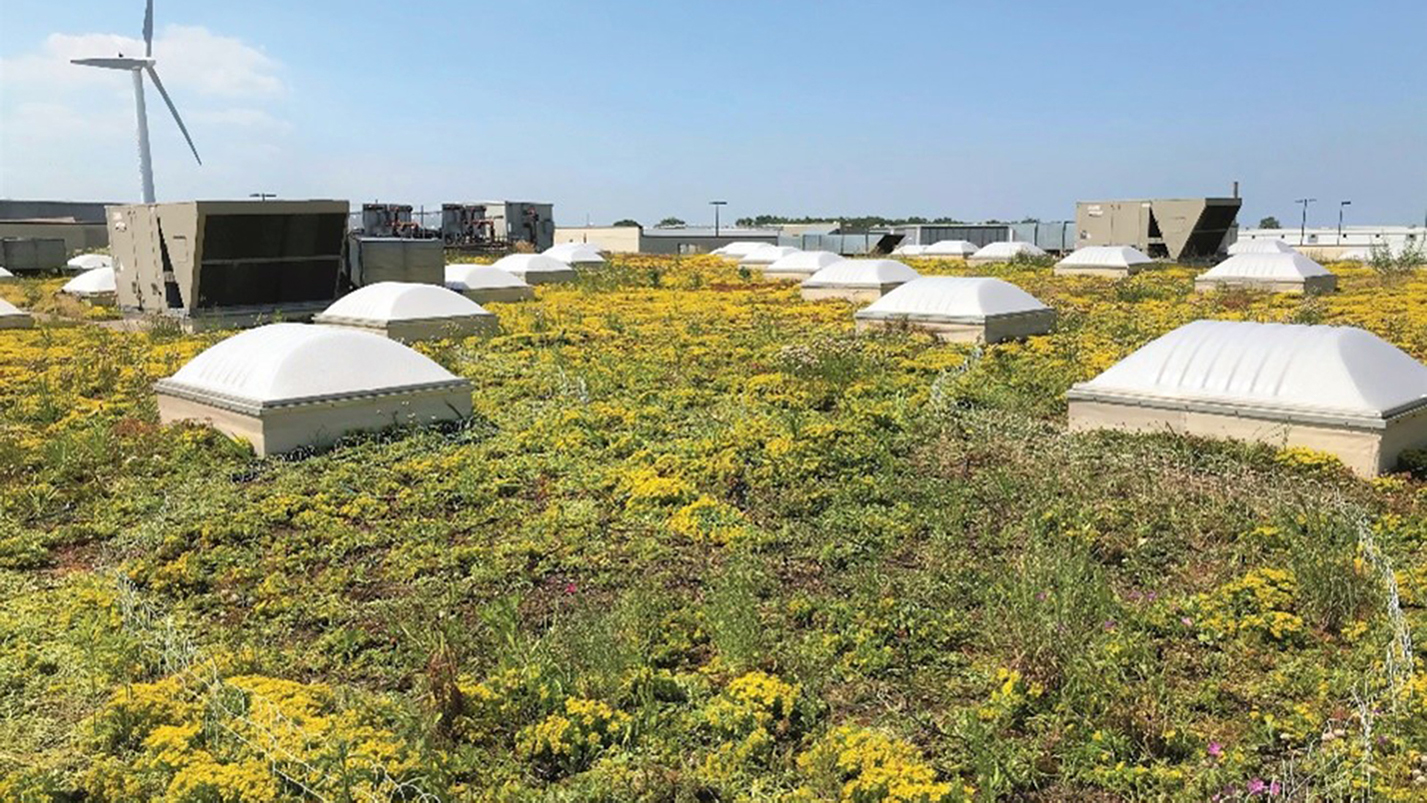Township of Edison
The Township of Edison has enacted Stormwater Pollution Prevention Ordinances in order to protect public health, safety and welfare, and to prescribe penalties for the failure to comply. The Township of Edison is the permitting authority for all land disturbing activities and requires the land owner to maintain all on-site stormwater control facilities and all open space areas (e.g. parks or “green” areas) required by the approved stormwater control plan. The Township of Edison will only provide construction permits to projects that establish a plan to manage stormwater runoff occurring during the construction process. The Township of Edison, under the NPDES program, also has the authority to inspect properties for noncompliance and can issue a notice of violation (NOV) for any deficiency or infraction onsite. Property owners are responsible for the maintenance of any stormwater facilities or practices located on the property. The Township of Edison has the authority to inspect stormwater facilities and practices in order to ascertain that they properly maintained and functioning.
Prohibited Conduct
The spilling, dumping, or disposal of materials other than stormwater to the municipal separate storm sewer system operated by the Township of Edison is prohibited. The spilling, dumping, or disposal of materials other than stormwater in such a manner as to cause the discharge of pollutants to the municipal separate storm sewer system is also prohibited.
Exceptions to Prohibition
- Water line flushing and discharges from potable water sources
- Uncontaminated ground water (e.g., infiltration, crawl space or basement sump pumps, foundation or footing drains, rising ground waters)
- Air conditioning condensate (excluding contact and non-contact cooling water)
- Irrigation water (including landscape and lawn watering runoff)
- Flows from springs, riparian habitats and wetlands, water reservoir discharges and diverted stream flows
- Residential car washing water, and residential swimming pool discharges
- Sidewalk, driveway and street wash water
- Flows from firefighting activities
- Flows from rinsing of the following equipment with clean water:
- Beach maintenance equipment immediately following their use for their intended purposes; and
- Equipment used in the application of salt and de-icing materials immediately following salt and de-icing material applications. Prior to rinsing with clean water, all residual salt and de-icing materials must be removed from equipment and vehicles to the maximum extent practicable using dry cleaning methods (e.g., shoveling and sweeping). Recovered materials are to be returned to storage for reuse or properly discarded. Rinsing of equipment, as noted in the above situation is limited to exterior, undercarriage, and exposed parts and does not apply to engines or other enclosed machinery.
Enforcement
This ordinance shall be enforced by the Edison Township Police Department, Department of Health and Human Services and Department of Public Works of the Township of Edison.
Penalties
Any person(s) who continues to be in violation of the provisions of this ordinance, after being duly notified, shall be subject to a fine not to exceed two thousand dollars ($2,000.00).
34-8.3 Design and Performance Standards for Structural Stormwater Management Measures.
B. Stormwater management measures for minor development shall be designed to provide erosion control and groundwater recharge measures as follows:
- The minimum standards for erosion control are those established under the Soil and Sediment Control Act, N.J.S.A. 4:24-39 et seq., and implementing rules at N.J.A.C. 2:90.
- Seepage pits or other infiltration measures shall be provided with a capacity of three (3) inches of runoff for each square foot of new impervious area. Stone used in the infiltration/recharge devices shall be two and one-half (2 1/2) inches clean stone and a design void ratio of thirty-three (33%) percent shall be used. The infiltration measures shall be designed with an overflow to the surface which shall be stabilized and directed to nab existing stormwater conveyance system or in a manner to keep the overflow on the developed property to the greatest extent feasible. If the new impervious surface is not roof area, an equivalent area of existing roof may be directed to the recharge/infiltration system. This shall be permitted where existing roof is not already directed to a recharge/infiltration system.
C. Stormwater management measures for major development shall be designed to provide erosion control, groundwater recharge, stormwater runoff quantity control, and stormwater runoff quality treatment as follows:
- The minimum standards for erosion control are those established under the Soil and Sediment Control Act, N.J.S.A. 4:24-39 et seq., and implementing rules at N.J.A.C. 2:90.
- The minimum standards for groundwater recharge, stormwater quality, and stormwater runoff quantity shall be met by incorporating green infrastructure.
D. The standards in this section apply only to new major development and are intended to minimize the impact of stormwater runoff on water quality and water quantity in receiving water bodies and maintain groundwater recharge. The standards do not apply to new major development to the extent that alternative design and performance standards are applicable under a regional stormwater management plan or Water Quality Management Plan adopted in accordance with Department rules.
34-8.8 Safety Standards for Stormwater Management Basins.
A. This section sets forth requirements to protect public safety through the proper design and operation of stormwater management BMP. This section applies to any new stormwater management BMP.
C. Requirements for Trash Racks, Overflow Grates and Escape Provisions.
1. A trash rack is a device designed to catch trash and debris and prevent the clogging of outlet structures. Trash racks shall be installed at the intake to the outlet from the stormwater management BMP to ensure proper functioning of the BMP outlets
2. An overflow grate is designed to prevent obstruction of the overflow structure.
3. Stormwater management BMPs shall include escape provisions as follows:
-
- If a stormwater management BMP has an outlet structure, escape provisions shall be incorporated in or on the structure. Escape provisions include the installation of permanent ladders, steps, rungs, or other features that provide easily accessible means of egress from stormwater management BMPs. With the prior approval of the municipality pursuant to § 34-8.8c, a free-standing outlet structure may be exempted from this requirement;
- Safety ledges shall be constructed on the slopes of all new stormwater management BMPs having a permanent pool of water deeper than two and one-half feet. Safety ledges shall be comprised of two steps. Each step shall be four to six feet in width. One step shall be located approximately two and one-half feet below the permanent water surface, and the second step shall be located one to one and one-half feet above the permanent water surface. See 34-8.8e for an illustration of safety ledges in a stormwater management BMP; and
- In new stormwater management BMPs, the maximum interior slope for an earthen dam, embankment, or berm shall not be steeper than three horizontal to one vertical.
34-8.10 Maintenance and Repair.
B. General Maintenance.
- The design engineer shall prepare a maintenance plan for the stormwater management measures incorporated into the design of a major development.
- The maintenance plan shall contain specific preventative maintenance tasks and schedules; cost estimates, including estimated cost of sediment, debris, or trash removal; and the name, address, and telephone number of the person or persons responsible for preventative and corrective maintenance (including replacement). The plan shall contain information on BMP location, design, ownership, maintenance tasks and frequencies, and other details as specified in Chapter 8 of the NJ BMP Manual, as well as the tasks specific to the type of BMP, as described in the applicable chapter containing design specifics.
- If the maintenance plan identifies a person other than the property owner (for example, a developer, a public agency or homeowners’ association) as having the responsibility for maintenance, the plan shall include documentation of such person’s or entity’s agreement to assume this responsibility, or of the owner’s obligation to dedicate a stormwater management facility to such person under an applicable ordinance or regulation.
- Responsibility for maintenance shall not be assigned or transferred to the owner or tenant of an individual property in a residential development or project, unless such owner or tenant owns or leases the entire residential development or project. The individual property owner may be assigned incidental tasks, such as weeding of a green infrastructure BMP, provided the individual agrees to assume these tasks; however, the individual cannot be legally responsible for all of the maintenance required.
- If the party responsible for maintenance identified under § 34-8.10b3 above is not a public agency, the maintenance plan and any future revisions based on § 34-8.10b7 below shall be recorded upon the deed of record for each property on which the maintenance described in the maintenance plan must be undertaken.
- Preventative and corrective maintenance shall be performed to maintain the functional parameters (storage volume, infiltration rates, inflow/outflow capacity, etc.) of the stormwater management measure, including, but not limited to, repairs or replacement to the structure; removal of sediment, debris, or trash; restoration of eroded areas; snow and ice removal; fence repair or replacement; restoration of vegetation; and repair or replacement of non-vegetated linings.
Stormwater BMPs
- Bioretention Systems
- Standard Constructed Wetlands
- Dry Wells
- Extended Detention Basins
- Infiltration Basins
- Manufactured Treatment Devices
- Pervious Paving Systems
- Sand Filters
- Vegetative Filter Strips
- Wet Ponds
- Grass Swales
- Subsurface Gravel Wetlands
Link
Edison Stormwater Management Page
Edison Municipal Code

 Kenosha, Wis. Highway KR Regenerative Stormwater ConveyanceThe Root-Pike Watershed Initiative Network Kenosha County, and others worked with AQUALIS to design and implement an innovative solution for stormwater control along Highway KR.
Kenosha, Wis. Highway KR Regenerative Stormwater ConveyanceThe Root-Pike Watershed Initiative Network Kenosha County, and others worked with AQUALIS to design and implement an innovative solution for stormwater control along Highway KR. Durham, N.C. Sinkhole Leads to Stormwater System RehabilitationThe tenant on this property noticed a depression that opened to the ground below and notified the property owners.
Durham, N.C. Sinkhole Leads to Stormwater System RehabilitationThe tenant on this property noticed a depression that opened to the ground below and notified the property owners.

